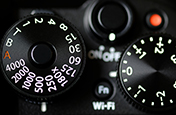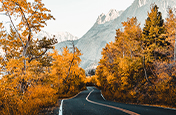Cómo puede ayudarte el espacio negativo a usar la nada para crear algo.
La fotografía de espacios negativos sitúa a los sujetos en su entorno con mecanismos espectaculares que cuentan una historia a través del espacio en blanco y el vacío.
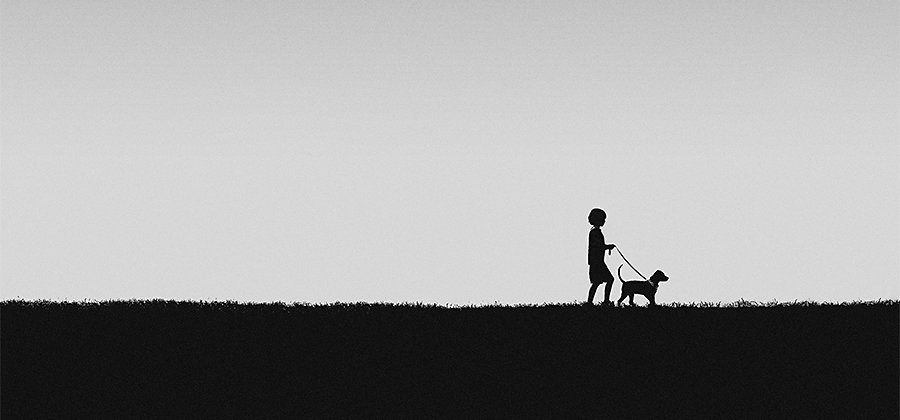
Imagen de Will Milne
¿Qué es la fotografía de espacios negativos?
La fotografía de espacios negativos está relacionada con la fotografía minimalista. No solo enfatiza al sujeto, sino también el espacio vacío que lo rodea. Es posible que los ojos del espectador se dirijan hacia la figura centra, pero no pueden pasar por alto la enorme sección de vacío que rodea y define a dicha figura. El vacío (sea cual sea la forma que este adopte) aporta definición y énfasis al sujeto. “Si el modelo o el intérprete son el sustantivo —afirma el fotógrafo Jimmy Marble—, el espacio negativo es el adjetivo”.
“Es minimalismo hecho fotografía —según el fotógrafo Will Milne—. Tienes el punto focal y muy pocos elementos más en la página”. Dicho punto focal o sujeto principal es el “espacio positivo” y, el resto del fotograma (ya sea un cielo despejado o un espacio en blanco del estudio), el negativo.
Independientemente del punto focal o el sujeto, debe ser imposible pasar por alto el espacio que lo rodea. “Siempre conviene que el espacio ‘chupe cámara’”, afirma la fotógrafa Petecia Le Fawnhawk-Maggiori. Hay una regla de oro que consiste en que la cantidad de espacio negativo debiera ocupar al menos un 50 % de la foto para lograr el efecto adecuado. Una foto de un paisaje con una única figura en la distancia que transmite una sensación de las proporciones y de soledad es un ejemplo de fotografía de espacios negativos.
Los elementos de las fotos de espacios negativos.
La idea esencial de las fotos de espacios negativos es la interacción entre el sujeto y su entorno. “Trato de contemplar todas mis fotos desde el punto de vista del diseño —explica Marble—. Tienes un cuadro, que es el marco, y todo consiste en ordenarlo”. En dicho marco, los sujetos suelen ocupar menos de la mitad del encuadre, y la mayoría del área restante queda para el espacio negativo.
Los fotógrafos de espacios negativos siguen usando las reglas de la composición fotográfica como, por ejemplo, la regla de los tercios, pero su estilo se presta a interpretar estas directrices con un planteamiento único. “Intenta buscar formas creativas de encontrar tus tercios —recomienda Marble—. A mí me gusta mucho tener elementos en primerísimo plano y al fondo del todo”.
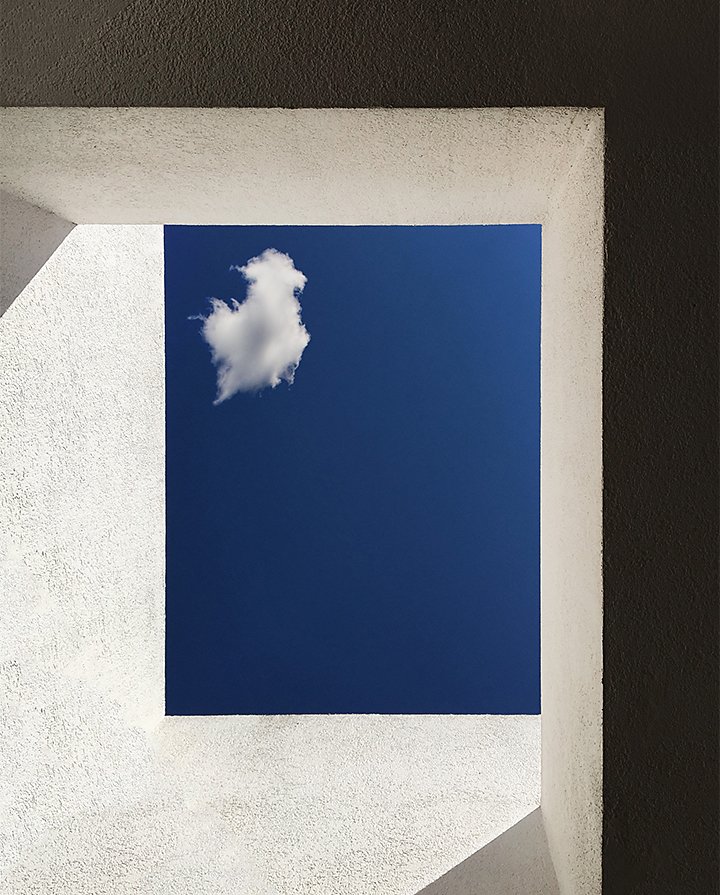
Imagen de Will Milne
Dado que suele haber muy pocos elementos en una foto, todos ellos deben tener mucho peso. Hay que ejecutar bien todos los aspectos. “Tienes que saber que lo que tienes posee mucha fuerza —afirma Milne—. Pudiera parecer descaradamente simple y carente de complejidad, pero en la práctica tienes que pensar en el primer plano y en el fondo, así como en los elementos que distraen y cómo eliminarlos”.
Ejemplos de espacio negativo.
Los espacios negativos suelen ser, aunque no siempre, fondos uniformes. Pueden ser paredes de hormigón, rollos de papel de colores brillantes o fondos negros del estudio. Pero eso solo es el principio. El vacío adopta formas muy distintas.
Los espacios negativos no tienen por qué ser uniformes. La hierba puede ser un espacio negativo, aunque tenga una buena dosis de textura. Del mismo modo, las arenas del desierto con notables variaciones o un cielo nuboso también pueden actuar como espacios vacíos dramáticos, aunque no sean de un solo color uniforme. La fotografía de espacios negativos va sobre las relaciones y la forma en la que el sujeto se relaciona con los espacios extensos, ya sea un ancho campo de hierba, un enorme desierto o un cielo abierto. Normalmente, lo más importante de la imagen es transmitir una sensación de las proporciones y el espacio que le sobra al sujeto, más que el tipo concreto de espacio negativo. Va mucho más allá de unos simples fondos minimalistas de un solo color.
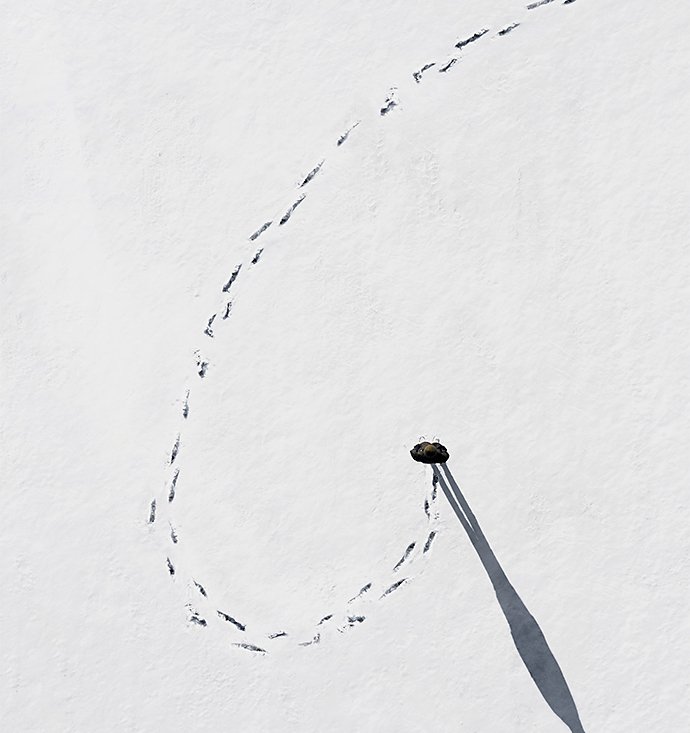
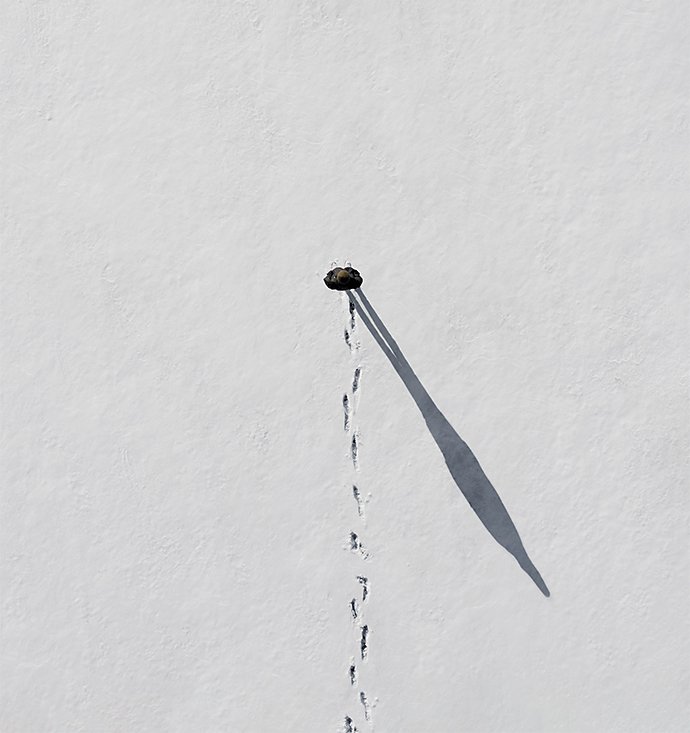
Imágenes de Will Milne
Cómo afecta la luz al espacio negativo.
“Puedes usar luces y sombras para crear un espacio negativo”, declara Marble. La iluminación puede enfatizar un sujeto con crudeza y dramatismo, y las sombras que se prolongan hacia el fondo pueden destacara aún más la relación del sujeto con el espacio. Para ello, lo mejor es utilizar una luz brillante y directa.
“La única forma de prestar atención de verdad a la forma de un sujeto es con luz fuerte”, asevera Milne. Una iluminación más suave puede crear sombras más difuminadas y graduales, y dicho efecto puede entrar en conflicto con las marcadas definiciones características de muchos fotógrafos de espacios negativos.
Crea tu propio espacio negativo.
“Ten una actitud abierta antes lo que pudiera ser un espacio negativo. Hay todo tipo de espacios negativos esperándote a que los descubras”. El espacio negativo puede ser incluso algo añadido por la manipulación de los ajustes de la cámara. La profundidad de campo baja puede generar un fondo difuminado sobre el que puede desmarcarse tu principal foco de atención, y la composición apropiada de la fotografía puede convertir cualquier lugar en un espacio negativo que capte la atención del espectador. La fotografía de espacios negativos trabaja sobre todo con el contraste y las proporciones, y un fotógrafo avezado puede conseguir ese efecto con el bokeh u otros efectos que conviertan parte del encuadre en un espacio negativo difuminado y otra parte en un sujeto nítidamente definido.
Las fotos del vacío puede tratar sobre cualquier tema. La fotografía de espacios negativos puede ser de comida o de moda. Puede tratarse de fotografía callejera en un ajetreado rincón de Nueva York, de retratos profesionales o incluso de fotografía de productos. Siempre que sitúe al sujeto dentro de un espacio abierto y le dé el vacío suficiente para interactuar con él, todo fotógrafo puede usar el espacio negativo para crear imágenes espectaculares.
La sensación de las imágenes de espacios negativos.
En última instancia, el componente más importante de la fotografía de espacios negativos son los sentimientos que te transmite. Una figura rodeada por el vacío siempre muestra una relación entre ella y el entorno. El lugar y el espacio que rodea a la figura son casi siempre más grandes y amplios que el sujeto, tanto en el sentido literal como en el metafórico. El espacio positivo y el negativo se combinan para crear un efecto intrigante.
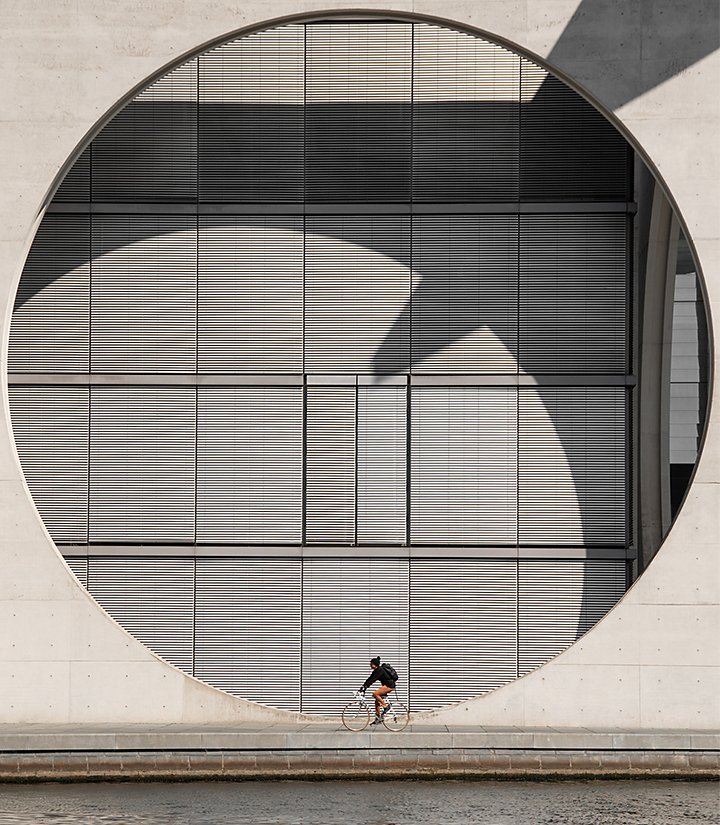
Una forma estupenda de comprender cómo funciona el efecto, así como de perfeccionar tus habilidades con la fotografía de espacios negativos, consiste en explorar muchos espacios. Tantea el contenido emocional de un espacio mediante la experiencia y la exploración. Captar ese sentimiento te llevará mucho tiempo. “Aprovecha lo que te puede ofrecer la naturaleza. Vive lo que significa la insignificancia —recomienda Le Fawnhawk-Maggiori—. Explora más. Para materializar el espacio, hay que vivirlo”.
Utiliza el vacío intencionadamente. Dado que las imágenes de espacios negativos suelen ser sumamente minimalistas, todo debe tener un aspecto nítido y pulcro, así como contribuir al efecto global. Prepárate para quitar todos los elementos que distraigan en la edición. Lo que suele parecer un enorme espacio vacío es el producto de un trabajo intencionado por parte del fotógrafo, quien borra diligentemente todas las distracciones en Adobe Photoshop. Tanto el recorte como la limpieza y la elaboración minuciosa de las imágenes contribuyen a atraer la mirada del espectador hacia un punto focal y hacerle apreciar una figura solitaria en medio de un vacío.
Colaboradores
Saca más partido a Adobe Photoshop Lightroom
Edita fotos cómodamente con ajustes predefinidos de Lightroom, Súper Resolución, comparte fotos con facilidad desde cualquier dispositivo y accede a tus proyectos desde cualquier parte con la gestión del almacenamiento de fotos en la nube.
Puede que también estés interesado en…
What is ISO?
Discover the role this pillar of the exposure triangle plays in photography.
Find deeper meaning with symbolic photography.
Explore the art of symbolic photography and use objects and colours to convey ideas.
Building a great landscape photo.
Explore ways to artistically capture scenic views with tips on landscape photography.
The basics of photography composition.
Composition is all-important for photographers. Learn more with these tips from the pros.
